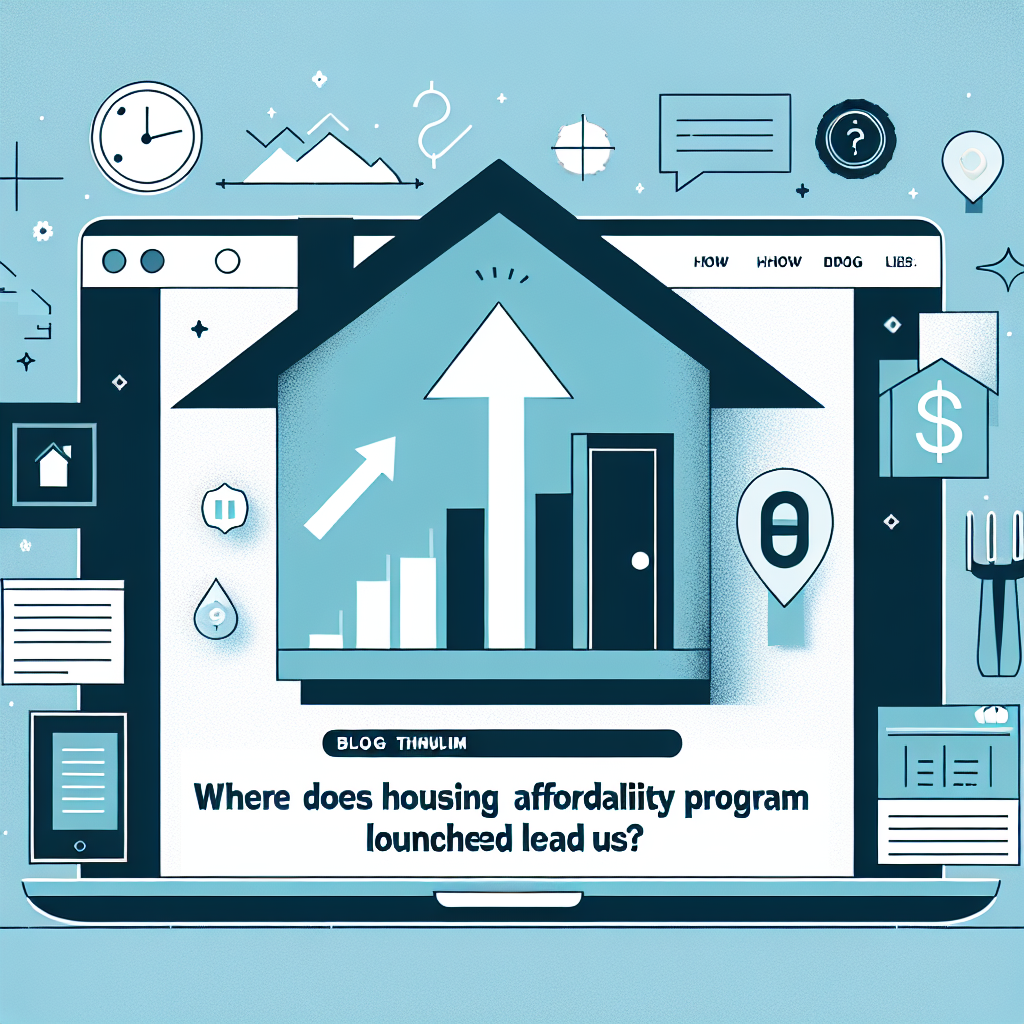Strap yourself in for a radical ride towards housing evolution as we delve into ‘where does the new housing affordability program lead us?’ This journey is lit by both uncertainty and promise, starting with a technology overview.
The recent launch heralds an innovative epoch where blockchain technology augments real estate operations. This mysterious but revolutionary system ensures no shady intermediaries diminish your rightful claim to a home – blockchain makes it seamless, transparent and affordable.
We are democratising housing access
, said one representative at the launch.
Moving to today’s state-of-the-art applications, several platforms harness this technology to break down traditional barriers. The adoption rates speak volumes about our readiness for change; people are not just accepting but demanding accountability from borderless entities.

Let’s look at the key innovations resulting from this tech-savvy approach to tackle age-old problems. Blockchain enhances transparency while smart contracts erase unnecessary bureaucracy. The immutable nature of these decentralised ledgers provides unsurpassed security against fraud. That’s innovation right there!

Market Adoption
- User-friendly interfaces beat once intimidating jargon rendering market adoption faster than you can sign your name on a mortgage document, making homeownership accessible even if banks turn away from you.
Technical Challenges
Although promising, technical difficulties such as scaling issues challenge this crusader for affordable homes. Yet solutions like sharding renew optimism in countering such limitations.
Industry Applications
Real estate isn’t the only domain benefiting; lending institutions and insurance sectors find value too in this technology-driven ecosystem.
The future could elevate us further with tokenised assets and programmable economies. This brave new world blurs the lines between asset ownership and investment – now that’s food for thought!
Societal impacts weigh heavy on our collective conscience. As blockchain democratises real estate, it forces government introspection into regulatory frameworks fostering a healthier conversation around wealth disparity.

“The idea of making housing genuinely affordable challenges ingrained societal principles,” writes columnist Jacob Marco.

In conclusion, we watch with bated breath as this groundbreaking concept takes shape-we ask not if but when implementation will render housing inequality a relic of history. The journey towards ensuring everyone has a place to call home continues unabated by conventional resistance.

